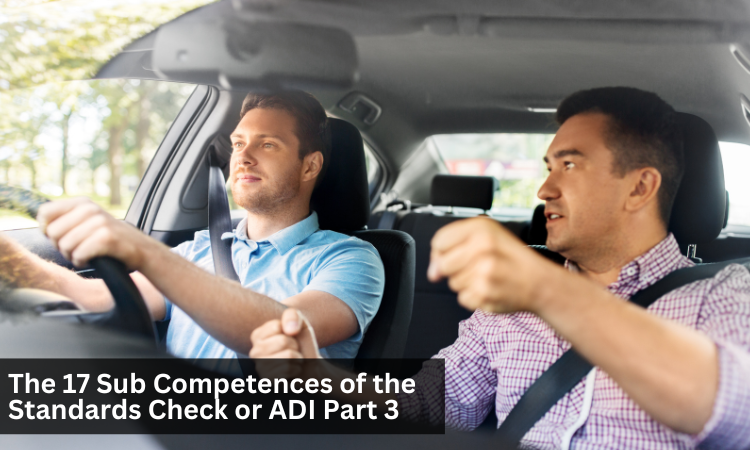
The First of the 17 Competencies you Must Know to be Able to Pass a ADI Part 3 Instructional Ability Examination
As promised, this is my interpretation of 17 Sub competencies of the Standards Check/ ADI Part 3 examination.
The first one I am going to start with is the first one, called “Did the trainer identify the pupil’s learning goal and needs,” under the header of lesson planning.
This sub-competence can be explained by reading page 81 of ADI 1. The link to this document I have included to the bottom of this article.
However, to be honest, I was never sure what the ADI 1 means, so I am going to give you my own interpretation of it.
The first and most important point about this sub-competence is that you have to be client-centred, not client lead. What I mean by that is that your pupil might have their own goals for the lesson. However, it might not be what they need. For example, if your pupil might say, “I want to do the parallel park today, as I like doing it.” However, you have clearly observed your pupil’s use of mirrors is non-existent when changing lanes on dual carriageways. I would want my pupil to be working on this goal as it’s what they need, not what they want!
Also, we shouldn’t be instructor-led when setting lesson goals for your pupils. What I mean by that is we shouldn’t directly tell our pupils what we think is best for them. For instance, at the start of the lesson we say, “Today your objective is right hands”. If we don’t have any input from students, they will switch off and become passive. Client centred learning is also being in partnership with your pupil, you should both working as a team to develop learning.
Your pupil needs to be encouraged to work on something that matters to them, even if they do not realise it.
Also, remember your goal needs to be specific.
Setting a goal, of driving on dual carriageways is too general a goal. What aspect of dual carriageway driving do they need to improve. For instance, do they need to improve their lane changing, lane positioning/ discipline, joining via a slip road, joining via a central reservation (with varying width) maintaining correct following distances, making progress or forward planning. This list is quite long as I would suggest picking one at first, so your pupil and you are focused on that area of their driving. The goal of the lesson needs to be clearly well- defined. Saying we are going to work on the approach speed with roundabouts, is a fairly defined goal, but finding out what a pupil is thinking or feeling can expand this goal further. When you find out how somebody thinks or feels may help you define a more specific goal. For example, your pupil might be approaching roundabouts too fast because they are frightened of holding up the vehicles behind. The goal would have to be refined to overcome this fear.
Also, their goal needs to be SMART, I have already wrote an article on previously, so you need to look back on that one (S- Specific, M-Measurable, A- Achievable, R- Relevant, T- Timely).
Also, the sub-competence of “Did the trainer identify the pupil’s learning goals and needs?”
Is linked with the other sub-competencies. For example, the sub competence of “Was the trainer aware of the surroundings and pupil’s actions” under risk management requires you to watch your pupil. If you are not watching your pupil, how do you know what they need to work on, especially if they are not using their mirrors properly.
Next week, I will be explaining the next sub-competence under lesson planning.
Link to ADI1- https://assets.publishing.service.gov.uk/government/uploads/system/uploads/attachment_data/file/1116988/carrying-out-driving-instructor-tests-and-checks-adi1.pdf
Get in touch with me here if you would like to discuss this in more detail.
